Aquilegia: description, planting and care
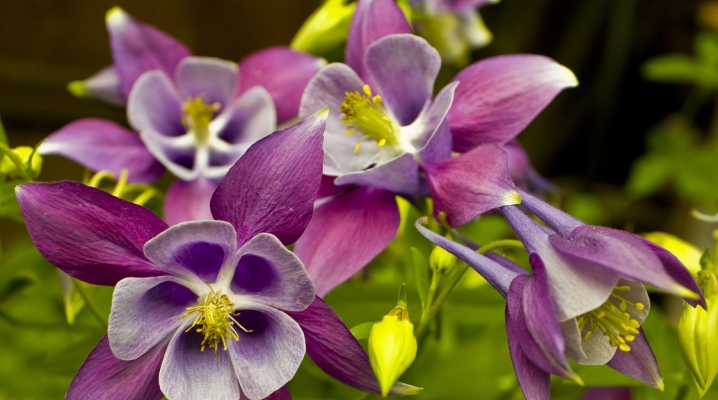
A modest and graceful aquilegia is able to organically fit into the design of any personal plot. During the flowering period, this charming perennial becomes one of the brightest decorations in the garden. What else is aquilegia remarkable, what are the features of its cultivation, how to properly care for the plant? Let's talk about this in our article.
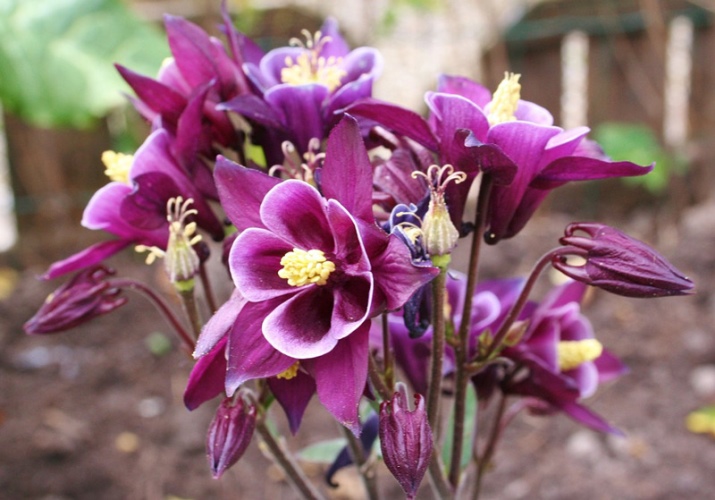
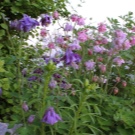

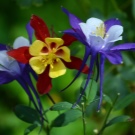
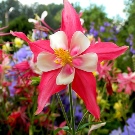
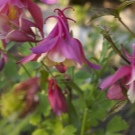
Peculiarities
Aquilegia (other common names: catchment, boots, eagle, columbina) is a flowering herbaceous perennial of the buttercup family. This genus has over 100 plant varieties, many of which are widespread in ornamental gardening.
Most representatives of this genus are vigorous plants that form beautiful compact bushes. Their height depends on the species characteristics and can vary from 25 to 80 cm. Some varieties are capable of reaching a height of 100 cm or more.
The development of the catchment shoots is carried out within 2 years. In the first year, a regeneration bud is formed in the root zone, from which a rosette of young leaves, shoots and flower-bearing arrows is subsequently formed. Rosette leaves are dark green, triple-dissected, petiolar. Stem leaves are simple, sessile, small.
Most varieties bloom in early to mid-summer. The flowering period can be up to 30 days. Some cultivated forms are capable of blooming throughout the summer.

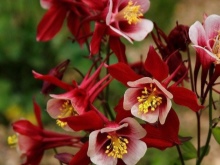
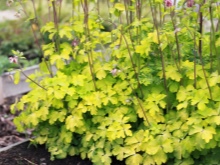
The catchment flowers are relatively large, drooping. The shape and color of the flowers depend on the type / variety of the plant. The most common varieties are considered to be star-shaped and bell-shaped. In ornamental horticulture, varieties of the catchment area with large simple and double flowers have become widespread.
The palette of colors includes bright white, lilac purple, raspberry pink, purple red, golden yellow, dark orange and other shades. Varietal aquilegia with variegated double flowers, reaching 8-10 cm in diameter, look very impressive.
A characteristic feature of the structure of the aquilegia rim is the presence of a hollow elongated outgrowth - a spur. Its size and shape depend on the specific characteristics of the plant. In some species and cultivated forms of aquilegia, flowers do not have spurs.
Aquilegia fruits are prefabricated, consisting of several polysperms with a dry pericarp. Seeds are small, glossy, black, poisonous. The seeds have a shelf life of about 10-12 months.
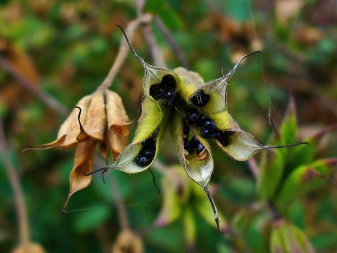
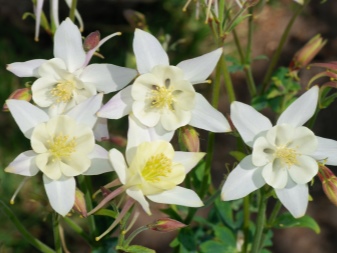

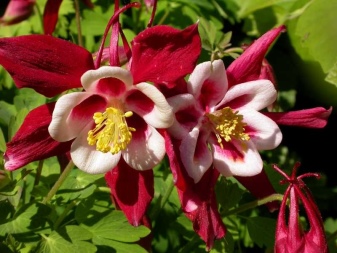
Varieties
The catchment genus includes more than 100 plant species found in the wild. Many wild varieties are actively used by breeders to obtain new original varieties. Consider a description of the species and varieties of aquilegia.
- Aquilegia vulgaris is a winter-hardy herbaceous perennial found in southern and central Europe and Scandinavia. In Russia, this type of catchment area grows mainly in the European part, in Western Siberia and Kamchatka.
The plant reaches a height of 30-70 centimeters. Stems are erect, thin, branched at the top. The leaves are gray-green, pubescent, petiolar. Flowering starts in early or mid-summer.At this time, many drooping bell flowers with hooked spurs appear on the thin burgundy-purple shoots of aquilegia. The color of the flowers can be deep blue, purple-pink, lilac-purple, crimson-red or snow-white. The plant is poisonous.

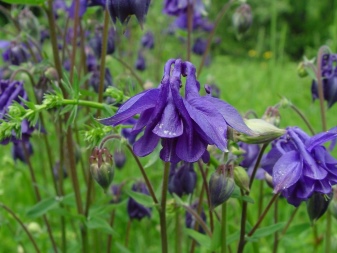
- Small-flowered aquilegia is a wild species, distributed mainly in China. In Russia, it is found in Central Siberia and the Far East. The length of the erect stems of this species of aquilegia varies from 15 to 45 cm. The leaves are light green, trifoliate, with a smooth or pubescent surface. The beginning of flowering is June.
The flowers are small, up to 3 cm in diameter, collected in umbellate inflorescences. The color of the flowers is blue-lilac or lilac-violet.
Aquilegia of this type is actively used in ornamental gardening.

- The blue catchment is a flowering aquilegia species found in the western United States. This variety of plants is still used by breeders to obtain new interesting varieties. Aquilegia of this species form a spreading bush, reaching about 65 cm in height. The size of the bush in diameter can vary from 40 to 60 centimeters.
The leaves are trifoliate, emerald green or gray-green with a bluish tint. Flowering begins in May and lasts for a month. The flowers are ordinary (simple) or semi-double, reaching 5-6 cm in diameter. The spur is thin, even, and elongated. The color of the flowers is bluish-lilac, raspberry-pink or wine-red.
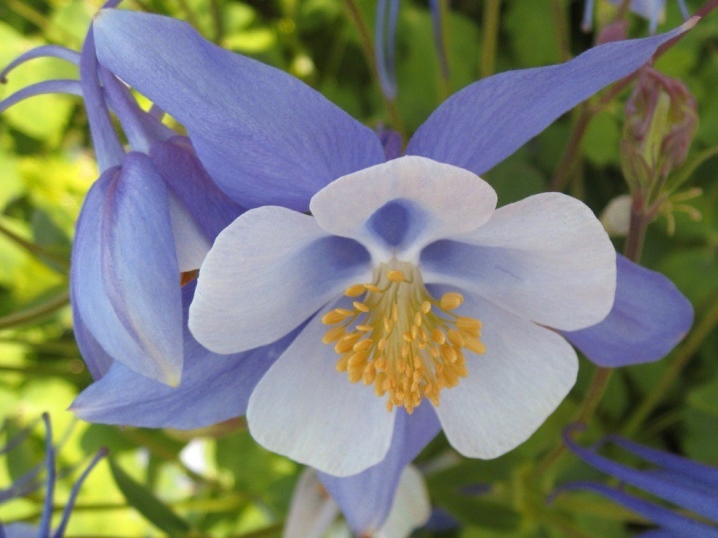
- "Nora Barlow" is a winter-hardy, unpretentious variety of aquilegia ordinary, which has become widespread in ornamental gardening. Plants form beautiful multi-stemmed bushes up to 80-100 cm high. Shoots are erect, pale green, covered with graceful lacy foliage. The aquilegia of this variety blooms in the first half of summer.
The flowers are large, lush, double, similar to the flowers of water lilies. The color of the flowers is white-pink.
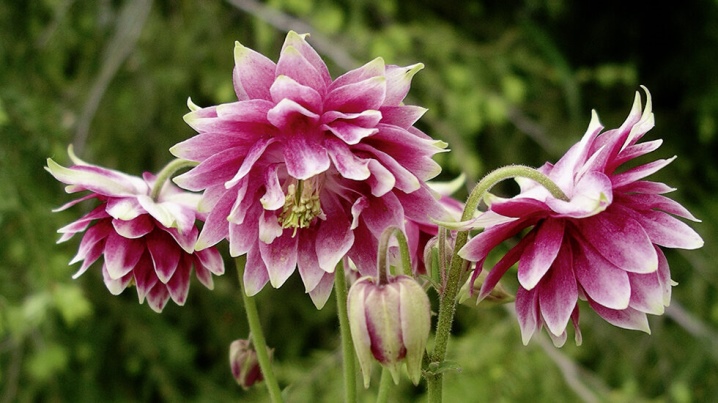
- "Biedermeier" - a group of low and medium-sized varietal aquilegiaadapted for growing in regions with harsh climates. The average plant height is 35-45 cm. Aquilegia of this variety are popular with flower growers due to their amazing unpretentiousness, endurance, winter hardiness.
The flowering period is from May to July. Flowers are solitary, drooping, reaching 4-5 centimeters in diameter. The color is bright, monochromatic or two-tone. The color palette includes milky white, coral pink, lavender lilac, wine red, sapphire blue shades.
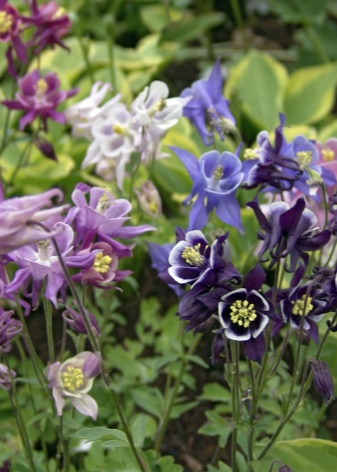

- "Clementine" - a series of varietal abundant flowering aquilegiagrown by gardeners both outdoors and in containers. The height of compact bushes is about 30-35 centimeters. Plants enter the flowering phase in the first half of summer.
The aquilegia flowers of this variety are rather large, densely double, outwardly similar to clematis flowers. The color of flowers can be salmon pink, pale lilac, pale purple, crimson red, cornflower blue, snow-white.
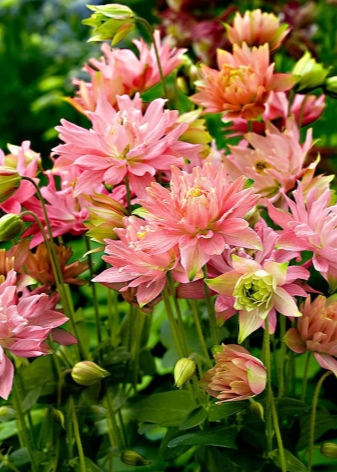

How to plant?
Aquilegia prefers to grow in slightly shaded areas with moderately moist, loose and fertile soil. It is allowed to grow it in sunny areas, but in this case the flowers of the plant will be less bright.
The landing site is dug up in advance, cleaned of debris, stones and plant debris. Heavy clay soils are diluted with sand or a mixture of humus and peat. Wood ash or lime is added to acidic soils during digging.


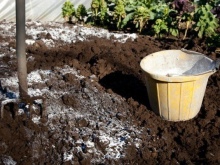
Seedling
Seedlings of the catchment area are planted in early summer. Young plants are planted taking into account their varietal characteristics. Low-growing varieties are placed at a distance of 20-35 cm from each other, tall ones - at a distance of 40-50 cm.
The size of the planting holes should slightly exceed the size of the root ball of the seedlings. During planting, each seedling is placed vertically in the hole, after which its roots are covered with soil mixture. The hole is filled in such a way that the renewal buds located at the base of the bush are above the ground. At the end of the work, the earth in the near-trunk circle is slightly compacted, watered and sprinkled with peat.
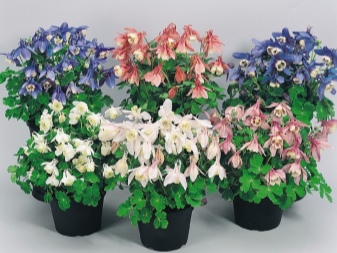
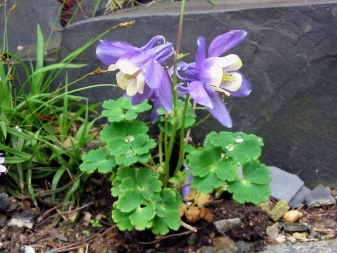
Seeds
You can also grow aquilegia outdoors by sowing seeds. Seeds are usually sown in spring or autumn. Sowing in the fall provides the seeds with natural stratification. To do this, in late summer or early autumn, seeds are sown on the beds, sprinkled with a thin (about 0.5 cm) layer of earth, watered and sprinkled with peat. With autumn sowing, aquilegia shoots should be expected in the spring of next year.
When planning to sow seeds in the spring, the florist must stratify them in advance at home. For this, the seeds are stored for a month on the lower shelf of the refrigerator in a container with moist peat.
Spring sowing of stratified seeds is carried out after the snow melts (in March-April). Seeds are sown on the beds in the usual way. Before the emergence of seedlings, crops are regularly, but moderately watered, avoiding either overdrying or waterlogging of the soil. In this case, seedlings usually appear in 3-4 weeks.

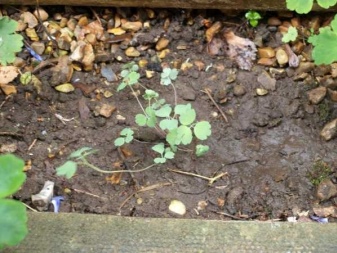
How to take care of it properly?
Aquilegia is a perennial unpretentious culture with a rather powerful and well-developed root system. This feature allows the plant to tolerate drought. At the same time, such a structure of the roots causes a painful reaction of aquilegia to transplantation.
The main care of the catchment includes periodic watering, pruning, removal of dried inflorescences and stems, and occasional feeding. These unpretentious perennials do not require specific care and special growing conditions. Water the catchment as needed. In dry summers, it is recommended to water these plants 1-2 times a week.
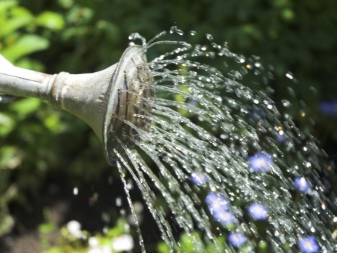

In order for the flowering of aquilegia to be longer and lush, it is recommended to feed them during the season. The first feeding of the catchment area is carried out at the beginning of the growing season using nitrogen-containing fertilizers. The second time the plants are fed in the budding phase and the beginning of flowering. At this stage, fertilizers containing potassium and phosphorus are used. The third top dressing is carried out after flowering (at the end of summer) using potash preparations.
Not all novice growers know what to do next with the plant after flowering. Usually at this stage, the catchment begins to carefully prepare for wintering.
After the aquilegia has faded, the dried stalks are cut off. Some gardeners leave dry flowering arrows with inflorescences until the seeds are fully ripe. After collecting the seeds, dry stalks, shoots and leaves are removed with a sharp pruner. It is not necessary to completely prune or cover adult aquilegia before wintering.
It is recommended to cover young plants for the winter with spruce branches. A layer of compost should be placed under bushes over 4 years old to prevent the roots from freezing.
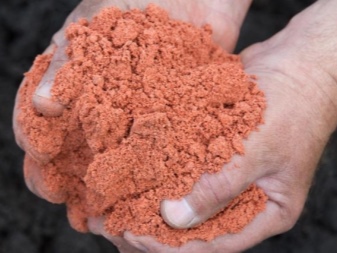
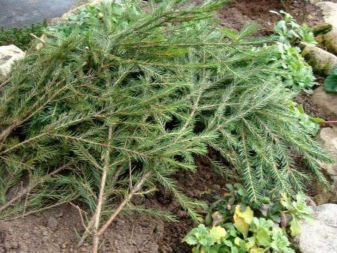
Transplanting requires special attention in the cultivation of aquilegia. Plants tolerate this procedure very painfully due to the structural features of their root system. Experienced flower growers transplant the catchment only in extreme cases.
Previously, the bush is dug around in a circle, after which it is carefully removed from the ground, trying not to damage the roots. The plant should be removed along with a lump of earth on the roots. Then the dug out bush is placed in the planting pit using the transshipment method. Further, the voids around the roots are filled with soil mixture. After transplanting, the plant is watered and provided with temporary shelter from direct sunlight.
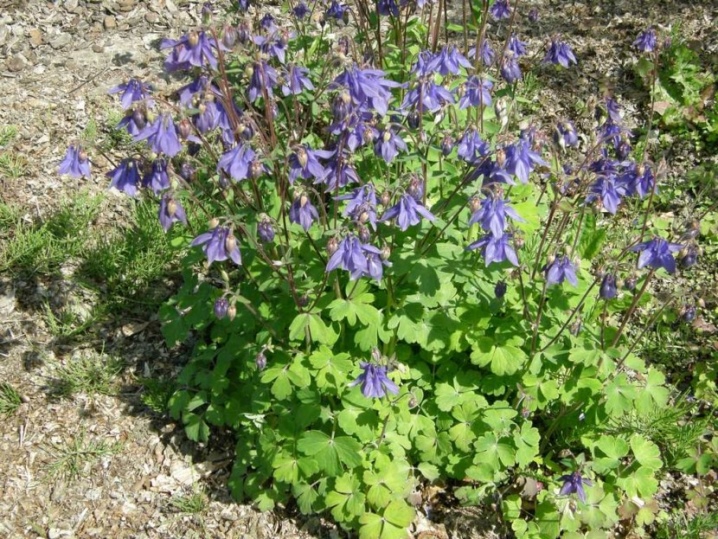
Reproduction methods
To multiply aquilegia, florists use:
- seeds;
- cuttings;
- parts of the bush (delenki).
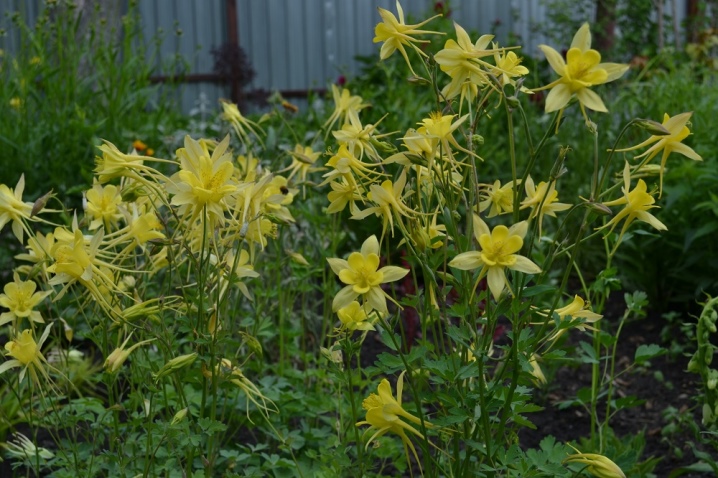
Seeds
To obtain seedlings, stratified seeds of the catchment area in March-April are sown in containers with a loose fertile soil mixture from garden soil, peat, sand and humus. It is allowed to use ready-made store mixes intended for growing seedlings.
Before sowing, the soil mixture in the container is leveled and moistened. The seeds are sown in tiny grooves, after which they are sprinkled with a thin layer of sand or sifted earth. After sowing, the containers are covered with foil and placed in a warm room. The optimum temperature for seed germination is considered to be + 16 ... 18 ° С.
Before emergence, the soil mixture in the container is regularly sprayed with water from a spray bottle. After emergence (after about 2 weeks), the film is removed from the container. Seedlings dive after 2 true leaves are formed on them.
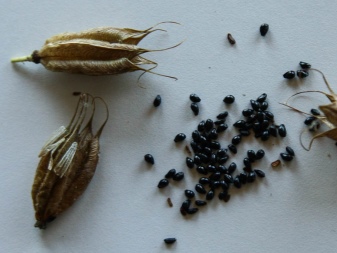
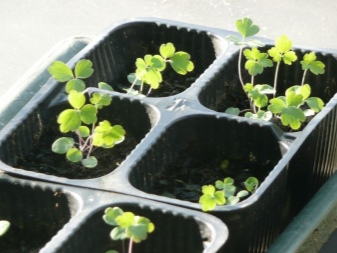
Cuttings
When using this method of reproduction, young root rosettes formed at the base of the bush serve as planting material. Their rooting is carried out most often in the spring, less often in the fall.
During the procedure, the socket is carefully cut with sharp scissors, after which the cut area is powdered with a root formation stimulator (Kornevin). Then the socket is placed in a container filled with a loose moist substrate (a mixture of sand and peat), deepened by 1 centimeter and covered with a transparent cap (a jar cut with a plastic bottle).
The rosette should be watered regularly before rooting, keeping the substrate moist.
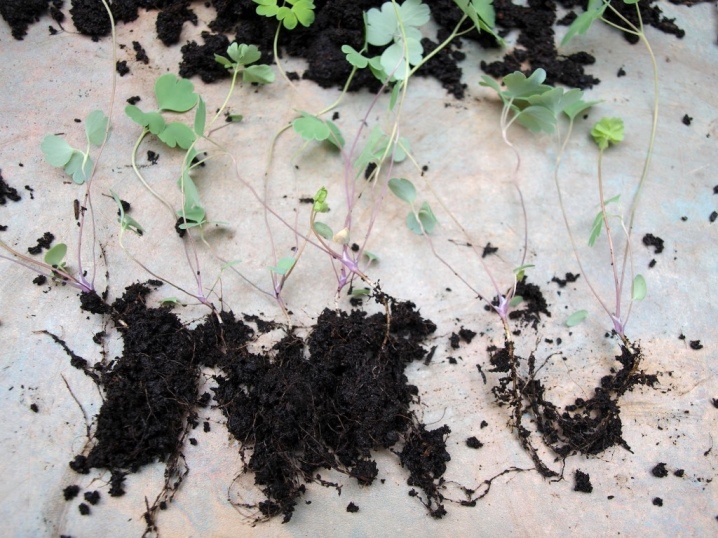
Division
For this method, mature aquilegia bushes at the age of 4-5 years are used. They are pre-dug out, trying not to damage the roots. Then the bush is divided into several parts with a sharp knife or pruner. At the same time, each division should have at least 2-3 buds. Further, the places of cuts and damage are sprinkled with crushed charcoal, after which the cuttings are planted in a new place.
While young plants will take root, they cannot be fed.

Diseases and pests
Powdery mildew is considered to be the most common disease in watersheds, which occurs when irrigation regimes are violated and the soil is swamped. The presence of this problem is usually indicated by the appearance of gray-yellow, dirty gray spots and light gray bloom on the leaves. The fight against the disease involves careful treatment of plants with fungicidal agents (Fundazol, Topaz).
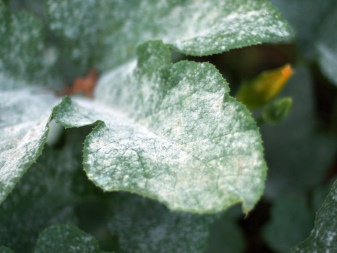
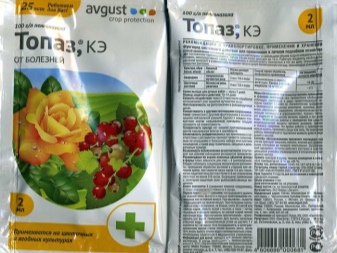
Like many other representatives of the garden, aquilegia often suffer from the invasion of aphids. This tiny parasite feeds on the cell sap of plants, which leads to drying and curling of leaves, the death of shoots, inflorescences and stems. The catchment area affected by aphids noticeably lags behind in development and growth, and has a weakened appearance.
On close inspection, colonies of parasites can be found on the inside of the leaves, on the stems at the base of the bush. To destroy aphids, plants are sprayed with soapy water. The total treatment of bushes with insecticidal preparations "Aktara", "Akarin" also gives excellent results.
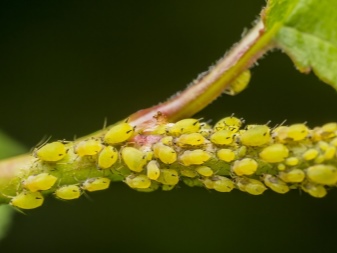
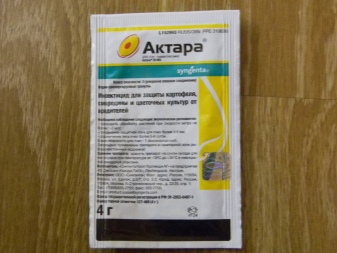
If the recommendations for care are not followed, aquilegia can be invaded by a spider mite. Drying of bushes, twisting, deformation and death of leaves testifies to the defeat of plants by this parasite. Another characteristic feature that indicates the activity of the pest is the formation of small clusters of gray-white cobwebs on the leaves and stems. In this situation, you can get rid of the parasite by treating the plant with soapy water and Fitoverm.
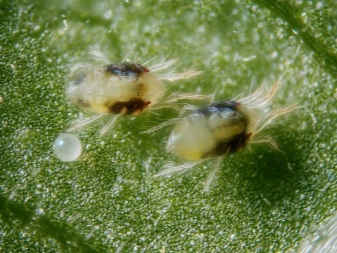
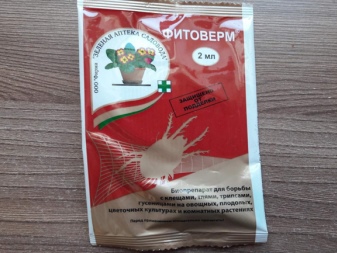
Increased air humidity, waterlogging and lack of light often lead to the defeat of aquilegia with gray rot... A specific symptom of this disease is brownish-brown spots with a dirty gray coating that appear on the leaves and stems. The fight against the disease involves the removal of damaged leaves and shoots, followed by a total treatment of the plant with Fundazol.
The same drug is recommended to treat neighboring plants located near the affected bush.
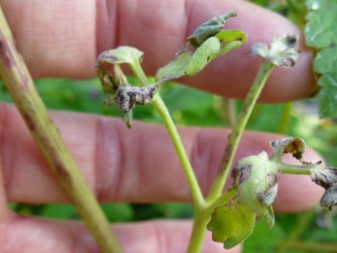
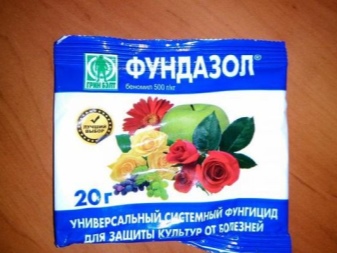
Use in landscape design
Landscape designers use various varieties and types of aquilegia when creating single and group plantings, when arranging multi-tiered flower beds and flower beds. These plants are able to organically fit into both landscape and regular garden design styles.
Aquilegia of low-growing varieties are ideal for decorating rock gardens. Here they will look good surrounded by turquoise gentian, golden yellow and purple-pink saxifrage. Tall varieties of the catchment area can be used in the design of ridges and mixborders. They are also often used to frame the borders of decorative reservoirs - ponds, fountains.

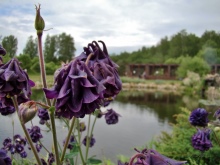

Often, landscape designers use high and medium-sized varieties of aquilegia for zoning a personal plot. With the help of these beautifully flowering perennials, you can emphasize the boundaries of the site, divide the territory into several independent functional zones.
The shade tolerance of aquilegia allows them to be used to fill empty spaces in the garden. In this case, they can successfully complement the planting of host and ferns that prefer shaded places.
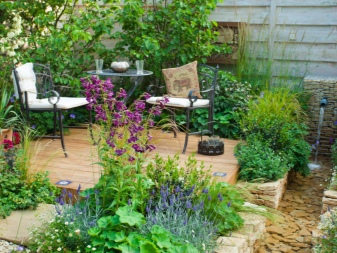
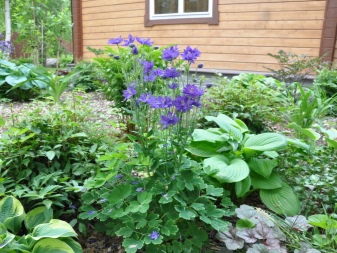
An original flower bed that combines blooming aquilegia with lupins, irises, and astilba can become a spectacular decoration of the personal plot. The plantings of the catchment area also look original with decorative conifers - thuja and juniper.



The following video will tell you about growing and caring for aquilegia.




































































































The comment was sent successfully.